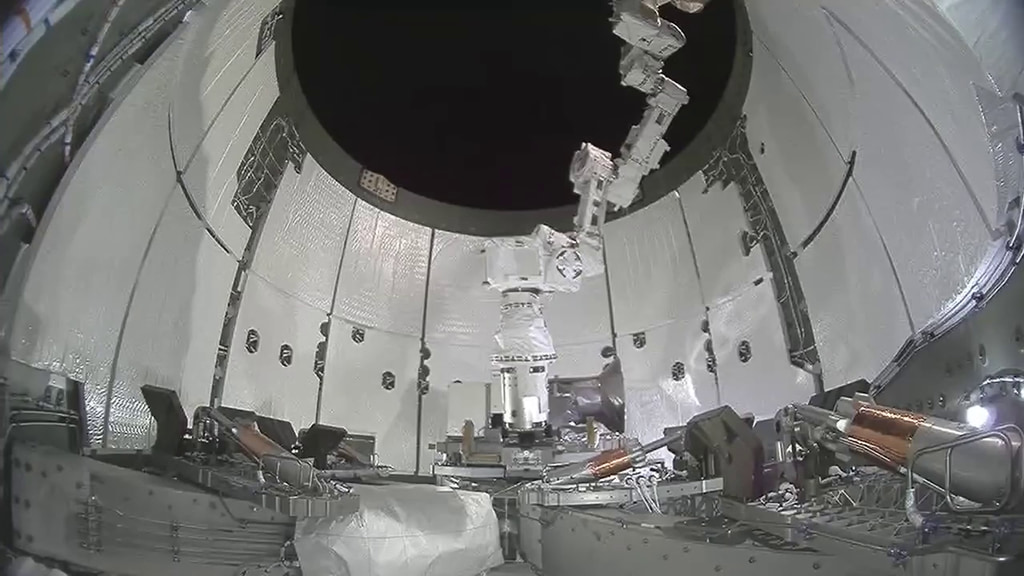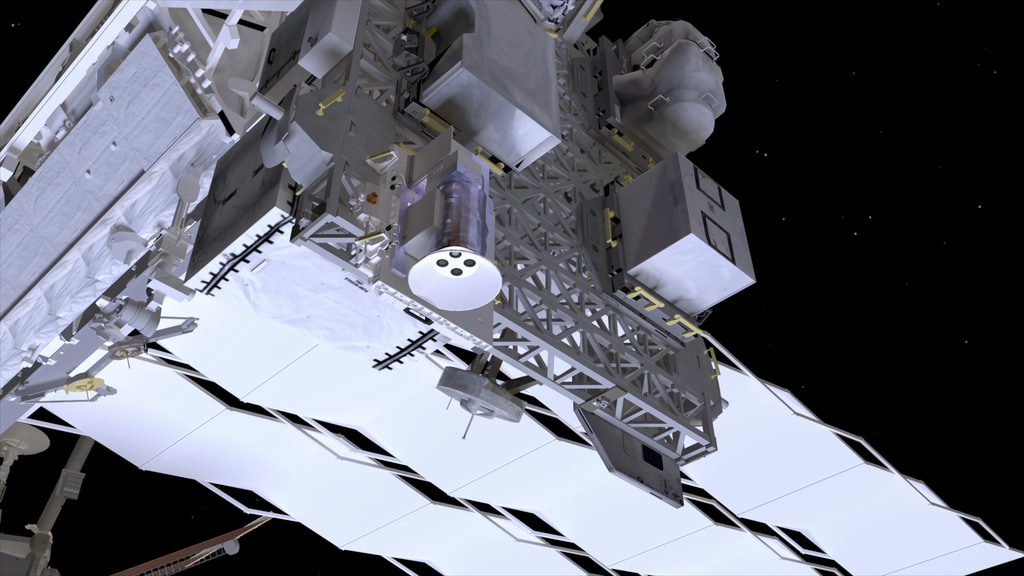Atmospheric Waves Experiment (AWE) Media Resources
From its unique vantage point on the International Space Station, NASA’s Atmospheric Waves Experiment (AWE) will look directly down into Earth’s atmosphere to study how gravity waves travel through the upper atmosphere. Data collected by AWE will enable scientists to determine the physics and characteristics of atmospheric gravity waves and how terrestrial weather influences the ionosphere, which can affect communication with satellites.
AWE is led by Michael Taylor at Utah State University in Logan, and it is managed by the Explorers Program Office at NASA’s Goddard Space Flight Center in Greenbelt, Maryland. Utah State University’s Space Dynamics Laboratory built the AWE instrument and will provide the mission operations center.
Visit https://science.nasa.gov/mission/awe/ to learn more. Watch AWE launch aboard NASA's SpaceX Cargo Dragon. Download isolated launch views of NASA's SpaceX CRS-29 mission.

NASA’s Atmospheric Waves Experiment, or AWE, payload is shown in this May 26, 2023, photo at Space Dynamics Laboratory facilities on Utah State University’s Innovation Campus with its red remove-before-flight covers installed. (Photo Credit: SDL/Allison Bills)

Space Dynamics Laboratory engineering and safety mission assurance personnel performing a cleanliness check with a black light on the AWE engineering model at SDL facilities on Utah State University’s Innovation Campus. (Photo Credit: SDL/Allison Bills)

Space Dynamics Laboratory employees ensure the Opto-Mechanical Assembly interface to the flight EXPRESS Payload Adapter is clean before mounting. (Photo Credit: SDL/Allison Bills)

Space Dynamics Laboratory employees determining the final positioning of the Atmospheric Waves Experiment Opto-Mechanical Assembly on the flight EXPRESS Payload Adapter at SDL facilities on Utah State University’s Innovation Campus. (Photo Credit: SDL/Allison Bills)

Space Dynamics Laboratory employee installing the cable harness installation on the Opto-Mechanical Assembly, with the Instrument Electronics Box in the foreground SDL facilities on Utah State University’s Innovation Campus. (Photo Credit: SDL/Allison Bills)

AWE's Optical Mechanical Assembly in a clean room at Space Dynamics Laboratory facilities on Utah State University’s Innovation Campus. (Photo Credit: SDL/Allison Bills)

The four AWE telescopes at Space Dynamics Laboratory facilities on Utah State University’s Innovation Campus. (Photo Credit: SDL/Allison Bills)

Space Dynamics Laboratory employees are shown in this image working on AWE’s Opto-Mechanical Assembly in a cleanroom at SDL facilities on Utah State University’s Innovation Campus. (Photo Credit: SDL/Allison Bills)

Space Dynamics Laboratory employee working on AWE’s Opto-Mechanical Assembly Internals SDL facilities on Utah State University’s Innovation Campus. (Photo Credit: SDL/Allison Bills)

Space Dynamics Laboratory engineers work on the AWE telescope in a cleanroom at SDL facilities on Utah State University’s Innovation Campus. AWE’s four telescopes and aperture baffle are shown in this image. (Photo Credit: SDL/Allison Bills)

Space Dynamics Laboratory employee is shown here with AWE in SDL’s Stray light test facility. AWE’s four telescopes and aperture baffle can be seen in this image. (Photo Credit: SDL/Allison Bills)

Space Dynamics Laboratory employees are shown in this Aug. 15, 2023, image at SDL facilities on Utah State University’s Innovation Campus preparing the Atmospheric Waves Experiment, or AWE, instrument for containerization and shipment to Kennedy Space Center. (Photo Credit: SDL/Allison Bills)

NASA's Atmospheric Waves Experiment, or AWE, installed in the trunk of the SpaceX Dragon spacecraft supporting NASA's CRS-29 mission to the International Space Station launching from the Kennedy Space Center in Florida. (Photo credit: SpaceX)
AWE B-roll TVAC and Gimbal
Video Credit: Space Dynamics Laboratory/Kelden Peterson
AWE B-roll Vibration Test
Video Credit: Space Dynamics Laboratory/Kelden Peterson
AWE B-roll Lens Assembly
Video Credit: Space Dynamics Laboratory/Kelden Peterson
AWE B-roll EMI Chamber
Video Credit: Space Dynamics Laboratory/Kelden Peterson
AWE B-roll Integration Timelapse
Video Credit: Space Dynamics Laboratory/Kelden Peterson
AWE B-roll Cleanroom
Video Credit: Space Dynamics Laboratory/Kelden Peterson

AWE Mission Patch
For More Information
Credits
Please give credit for this item to:
NASA's Goddard Space Flight Center
-
Communications
- Denise Hill (ADNET Systems, Inc.)
-
Writer
- Abbey A. Interrante (ADNET Systems, Inc.)
Release date
This page was originally published on Wednesday, October 25, 2023.
This page was last updated on Thursday, November 2, 2023 at 8:59 AM EDT.

![Complete transcript available.Music Credit: “Genosequence” by Alessandro Rizzo [PRS], Elliot Greenway Ireland [PRS] via Universal Production Music](/vis/a010000/a014400/a014464/14464_AWEOverview_Thumb.png)
